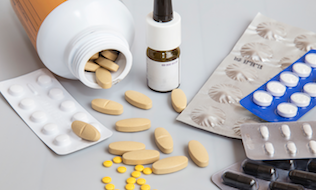

The announcement in late January that 70 of the most commonly prescribed drugs will see their prices fall by as much as 40 per cent on April 1 was certainly welcome news for plan sponsors. The deal, reached by the pan-Canadian Pharmaceutical Alliance and the Canadian Generic Pharmaceutical Association, will bring the cost of some generic products down to 10 per cent of the price of the brand-name drug.
So what will the effect on plan costs be?
First, it’s important to reflect on how far we’ve come. Less than 10 years ago, generic drug prices were between 63 and 70 per cent of the cost of a brand-name medication, in most cases. In addition, over the last decade, a wave of blockbuster generic drugs has hit the market in virtually every major class.
Read: Generic drug deal hailed for price cuts of up to 40% for public, private plans
The changes have gone a long way in helping plan sponsors cope with the expansion of innovative specialty therapies for conditions such as hepatitis C, psoriasis and asthma and into areas like eczema, chronic migraine headaches and primary progressive multiple sclerosis.
While lower prices will be a good development for plan sponsors, here are a few reasons why some plans shouldn’t expect to see a material decrease in their costs come April 1:
- Dated plan designs
In terms of plan design, two of the key pieces preventing plan sponsors from seeing more savings from lowered generic drug prices are formulary design and inefficient dispensing.
Thanks to flat reimbursement plans and malleable generic substitution provisions, generic utilization in active plans for those under age 65 hasn’t improved drastically in recent years. Looking at drug data, active plans filled 56.2 of every 100 prescriptions for a generic medication in 2015. The remainder was for single-source brand-name drugs and, to a much lesser degree, multi-source brand-name products.
Read: Patient advocacy organizations urge government to halt drug-pricing review
By the end of 2017, that generic penetration rate grew to only 59.6 per cent of claims for active plans. Those figures reflect billions of dollars and tens of millions of drug claims. The numbers mean that for every 100 prescriptions dispensed in any situation, fewer than 60 were for generics. In the United States, more than 90 out of every 100 prescriptions are filled for a generic. That’s a huge difference that highlights the impact of managed plan designs on filling behaviour.
Imagine where the average Canadian plan sponsor would be financially if it increased its existing generic utilization by 50 per cent to somewhere approaching 90 per cent of all claims.
Secondly, for many plan sponsors, dispensing fees can consume 30 to 40 per cent or more of the average cost of a generic claim today. Lower ingredient costs won’t change that figure. If a plan is susceptible to paying a bill every 30 days for a generic drug or a charge of $10-$12 on average because there’s no cap on either the dispensing fee or frequency, there will be a limited savings opportunity through lower generic prices.
- Generic mix
While lower prices are coming for some major generic medications on April 1, the changes won’t affect the majority of generic products. They include generic drugs such as esomeprazole, mometasone, duloxetine, tramadol and cetirizine.
Read: Canada second-highest spender on generic drugs among OECD countries: report
So if a plan is seeing a significant number of claims for drugs not affected by the changes, it won’t see material savings in the proton-pump inhibitor class of drugs.
Some examples
So what do the issues look like in practice? Two recent cases using transactional-level claims data showed very limited savings for a number of reasons:
- Generic utilization is suboptimal (no meaningful generic substitution);
- The price changes don’t affect a material number of generic claims;
- Dispensing efficiency is very poor; and
- There’s already significant exposure to high-cost drugs.
Read: PMPRB findings on generic drug prices out of date: CGPA
One plan will see savings of 2.1 per cent of its total spending between April 1, 2018, and March 31, 2019, given the lower costs of generic drugs. The other plan will see savings of two per cent.
While it’s true that nobody will ever complain about lower prices, plan sponsors expecting the changes to deliver deep savings may be very disappointed. There’s no magic bullet for proper plan design.
